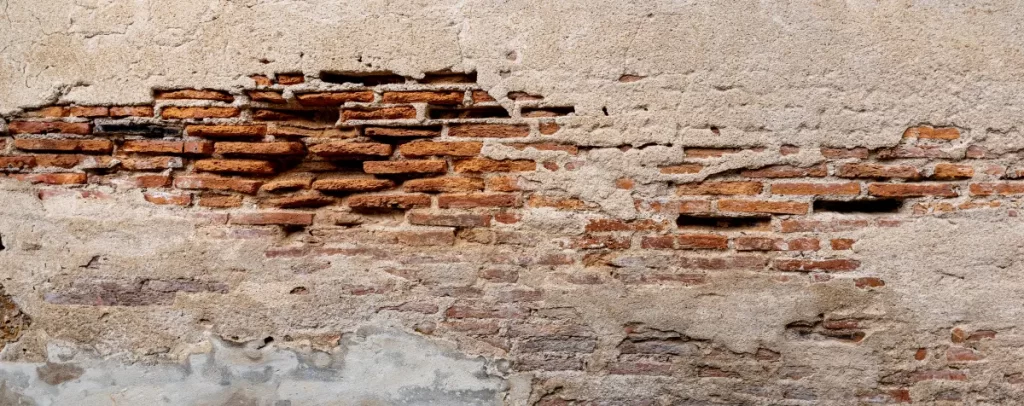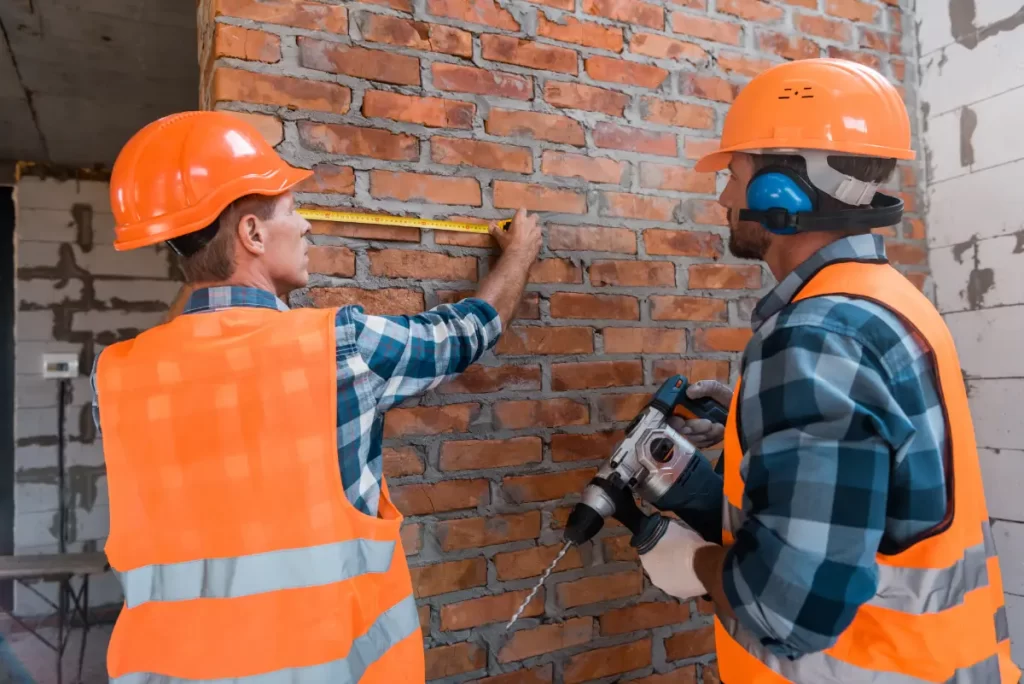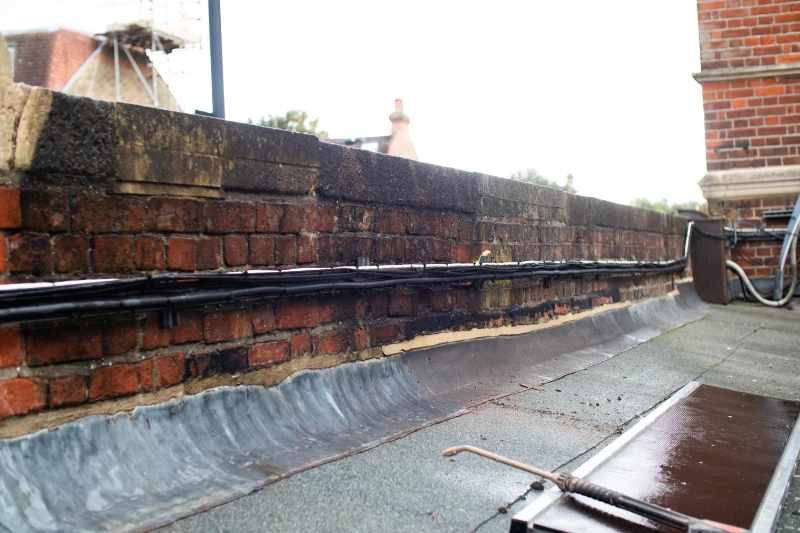Brick, with its warm, inviting aesthetic, serves as a classic material in both interior and exterior home designs.
However, maintaining its beauty requires regular care and cleaning, as brickwork can accumulate dirt, grime, and various stains over time.
This guide provides everything you need to know about cleaning brick surfaces inside and out to restore their natural charm and ensure their longevity.
Understanding the Basics of Brick Cleaning
Why is it Essential to Clean Brick Walls?
Cleaning brick walls is essential not only for aesthetic reasons but also for the structural integrity of the brickwork. Dirt, moss, and mildew that accumulate on the surface of the brick can retain moisture, leading to damage over time. Regularly cleaning bricks helps prevent decay and keeps them looking their best, preserving the value of your home.

What Makes Bricks Get Dirty or Stained?
Bricks can get dirty and stained from a variety of sources. Exterior brick walls are exposed to the weather, leading to stains from rainwater, growth of moss and mildew, and accumulation of grime from air pollution.
Interior brick may accumulate soot, especially near fireplaces, and dust and dirt from general household activities. The type of brick and the local environment also play roles in how quickly and severely brick surfaces become stained.
The Difference Between Interior and Exterior Brick Cleaning
The primary difference in cleaning exterior versus interior brick lies in the exposure to elements and the type of soiling of each face.
Exterior brick walls contend with harsher conditions, requiring more robust methods like pressure washing for effective cleaning.
Interior brick, meanwhile, often needs gentler techniques to avoid damage to the bricks or mortar, focusing on removing soot or dust without introducing excessive moisture.
Preparing Your Bricks for Cleaning
Assess the Condition of Your Brickwork Before Cleaning
Before cleaning, closely examine the brickwork to determine its condition. Look for signs of damage or weakened mortar, which may be exacerbated by cleaning.
Consider the age and type of brick, as historic or clay brick may require special care to prevent damage. Identifying these factors early can help you choose the most appropriate cleaning methods to protect your brickwork.
Gather the Right Tools and Materials for Brick Cleaning
For effective brick cleaning, gathering the correct tools and materials is crucial. Essential items include a bristle brush (or pressure washer for exterior brick), rubber gloves, protective eyewear, dish soap or a more potent cleaning solution like boric or muriatic acid for tougher stains, a sponge, and ample warm water.
Always test cleaning solutions on a small area of the brick to ensure they do not cause damage.
Protect Surrounding Areas from Damage During Cleaning
When preparing to clean brick, especially exterior brick, it’s important to protect surrounding areas. Cover plants, ground, and nearby surfaces to shield them from potentially harsh cleaning solvents.
Ensure windows are closed to prevent spray or runoff from entering your home. Taking these precautions can prevent unintended damage or additional cleaning tasks.
A Step-by-Step Guide to Cleaning Exterior Brick Surfaces
How to Remove Grime and Dirt from Exterior Brick Walls
To remove grime and dirt from exterior brick walls, start by saturating the bricks with a hose to loosen the dirt.
Mix a simple cleaning solution of dish soap and warm water in a bucket. Using a bristle brush, scrub the brick surfaces in sections, working the soapy mixture into the bricks. Rinse thoroughly with water to prevent soap residue.
For larger areas, consider using a pressure washer at a low setting to avoid damaging the brick.
Techniques for Tackling Tough Stains on Outdoor Brickwork
For tough stains on outdoor brickwork, such as moss or mildew, a stronger solution may be necessary.
Mixing diluted bleach with water in a spray bottle can effectively address these concerns. Spray the affected area, let the solution sit on the brick for a few minutes, then scrub with a bristle brush and rinse thoroughly.
For especially stubborn stains, muriatic acid diluted according to the manufacturer’s instructions can be used, but always with extreme caution and protective gear.
If you are dealing with paint stains, paint removal may require a specialised paint remover designed for brick surfaces. Choose the appropriate paint remover based on the type of paint, and always test in a small area first to avoid damage. Remember to wear gloves when handling strong cleaning agents or paint removers to protect your skin.
When and How to Use A Pressure Washer on Exterior Bricks
Using a pressure washer on exterior bricks is effective for removing built-up grime and stains.
However, it should be used cautiously to avoid damaging the mortar or brick face. Always start with the lowest pressure setting, hold the washer at a distance, and use a sweeping motion. Test on a small, inconspicuous area first.
Pressure washing once a year or as needed can keep your exterior walls looking fresh without causing harm.
Effective Methods for Cleaning Interior Brick Walls

Dealing With Soot and Grime on Indoor Brick Surfaces
To clean grime on indoor brick surfaces, a milder approach is recommended. Mix a solution of dish soap and warm water, and use a sponge to apply it gently to the surface. For a natural alternative, white vinegar can be used to clean indoor brick and remove stubborn stains or efflorescence.
For tougher stains, a paste made from salt and detergent applied with a brush can provide a deeper clean without harsh chemicals. Always finish by rinsing with a damp cloth to remove any cleaning residue.
The Best Approach to Cleaning Painted Brick Indoors
For cleaning painted brick indoors, it’s crucial to avoid damaging the paint while removing dirt. Use a mild detergent mixed with water and a soft cloth or sponge to wipe down the surface gently.
Avoid abrasive brushes or scrubbers that could scratch or peel the paint. Regular dusting can prevent buildup and make deeper cleaning less frequently necessary.
Natural Solutions for Refreshing Your Interior Brickwork
Natural cleaning solutions, such as a vinegar and water mixture, can effectively clean interior brick without introducing harsh chemicals into your home.
Spray the brick lightly with the solution, then use a brush to scrub the surface lightly. Rinse with a clean, damp cloth to remove any vinegar residue.
This method is perfect for maintaining the natural look of the brick while ensuring it stays clean and fresh.
Historic Home Brick Cleaning Considerations
Special Care for Older Brickwork
Cleaning brickwork in historic homes requires a gentle touch and a thoughtful approach. Older clay brickwork, often found in period properties, is more porous and can be easily damaged by harsh chemicals or aggressive cleaning methods. Before starting any brick cleaning, carefully assess the condition of your interior brick and exterior brick walls. Look for signs of crumbling mortar, cracks, or weakened bricks—these areas need extra caution to avoid further deterioration.
For cleaning interior bricks in historic homes, opt for mild dish soap mixed with warm water and applied with a soft-bristled brush or a damp cloth. This gentle cleaning solution helps lift dirt and grime without compromising the brick’s appearance or structural integrity. Avoid using a pressure washer on exterior brick, as the force can erode the brick face or dislodge old mortar. Instead, use a stiff brush and a suitable cleaning solution, working slowly to remove surface stains and accumulated dirt.
If you’re unsure about the best approach, consult a professional with experience in historic brick cleaning and restoration.
Restore Your Brick With Environ Property Services – London’s #1 Choice for Expert Brick Cleaning
At Environ Property Services, we clean and restore bricks to elevate curb appeal and protect the integrity of your property. With decades of hands-on experience and a deep understanding of London’s unique architecture, we have become the trusted name in professional brick cleaning in London.
Our specialists apply precision techniques tailored to each surface. From low-pressure ThermaTech steam cleaning to specialist stain removal, we guarantee a thorough, safe, and stunning result. We treat every building with respect, care, and attention to the smallest detail.
Our process begins with a detailed survey to assess your brickwork, identify underlying issues, and recommend the ideal approach. Whether you are a homeowner, landlord, or restoring a listed heritage building, we adapt our methods to fit your structure’s age, material, and condition.
From your first phone call to the final rinse, you will experience professionalism, transparency, and unmatched expertise. Don’t risk the damage and frustration of DIY shortcuts. Call us today on 020 4572 5564 or request a callback to restore your brickwork safely, expertly, and affordably.
Maintaining Your Brick Walls: Tips and Tricks for Longevity
Preventive Measures to Keep Your Bricks Clean Longer
Preventative measures are key to keeping bricks clean longer. Seal exterior brickwork to protect against moisture and stains, and ensure gutters and downspouts are clear to prevent water damage.
Inside, regular dusting can minimise the accumulation of dirt and grime on exposed brick surfaces.
Repair Mortar and Addressing Moisture Issues
Repairing damaged mortar and addressing any moisture issues are essential steps in maintaining the integrity and appearance of brick walls.
Tuckpointing — the process of removing and replacing damaged mortar — can prevent further deterioration and improve the wall’s resistance to moisture.
Ensuring proper drainage around the home also helps protect exterior brick walls from water damage.
Schedule Regular Brick Maintenance
Establishing a regular maintenance schedule for brick walls can prevent the need for extensive cleaning and repairs.
This includes annual inspections to identify potential issues, routine cleaning of both interior and exterior brick surfaces, and immediate attention to any damage detected.
By dedicating time to maintaining your brick walls, you ensure their beauty and structural integrity for years to come.
Professional Brick Cleaning VS DIY Brick Cleaning
The porous nature and exposure of bricks to environmental elements mean it requires regular attention to maintain its appeal. Whether it’s the exterior facade facing the brunt of the weather or interior walls gathering dust and soot, each surface demands a tailored approach to cleaning. This necessity raises a question: should you embark on this journey alone or seek the expertise of professional Brick cleaning services in London?
The answer lies in understanding the stakes. DIY brick cleaning, while initially seeming cost-effective, often overlooks the nuances of brick care, risking damage to both the brick and mortar through improper techniques or harsh chemicals.
Professional services, on the other hand, bring a wealth of experience, ensuring that every pore and crevice is treated with the respect it deserves without compromising the brick’s integrity or your home’s aesthetic. Moreover, the use of environmentally friendly and technologically advanced systems like ThermaTech not only guarantees a deeper clean but does so with the utmost respect for the environment and the longevity of your brickwork.
In choosing a professional path, you’re not just cleaning your brick; you’re investing in your home’s future, ensuring that its beauty and strength stand the test of time.
Frequently Asked Questions
How can I effectively clean the brick outdoors to remove moss and dirt?
To clean outdoor brick effectively, especially when dealing with moss and dirt, start by using a stiff brush to scrub the surface. For moss buildup, a solution of boric acid and water can be particularly effective. Apply the solution to the moss-covered areas and let it sit for at least 30 minutes before scrubbing with a stiff brush.
For general dirt and grime, mix a gallon of warm water with dish soap and use a scrub brush to clean the surface. Always rinse the brick thoroughly with water after cleaning to remove any residual cleaning solution.
What’s the best way to clean interior brick to preserve its natural look?
To clean interior brick while preserving its natural look, start by gently dusting to remove loose dirt. Then, mix mild dish soap with warm water and gently scrub the surface with a soft brush to clean the brickwork without damaging it.
Avoid using harsh chemicals or abrasive tools that can erode the brick-and-mortar. Rinse the brick with a clean rag dampened in clean water, and let the brick air dry completely. For stubborn stains, a paste made of dish soap and salt can be applied before scrubbing.
Can I use a pressure washer to clean the brickwork outside my historic home?
While a pressure washer can be an effective tool for exterior cleaning of brickwork, caution is advised, especially with historic homes. The intense pressure can damage the brick and mortar if not used correctly.
It’s essential to use a low-pressure setting and hold the nozzle at least 12 inches away from the surface. Before using a pressure washer, test it on a small, inconspicuous area. For best results, consider consulting our professionals with experience in cleaning historical buildings.
How do I remove heavy mortar stains from brick, both inside and outside?
To remove heavy mortar stains from brick, whether inside or outside, create a cleaning solution by mixing one part muriatic acid with ten parts water. Apply the solution to the stained area using a brush, let the acid work for 5 to 10 minutes, and then scrub vigorously with a stiff brush. Always wear protective gear, such as gloves and goggles, when working with acid solutions.
Rinse the brick thoroughly with water after cleaning. If stains persist, it may be necessary to repeat the process or seek professional help.
Are there any natural cleaning solutions for both indoor and outdoor brick cleaning?
Yes, there are natural cleaning solutions that can be used for both indoor and outdoor brick cleaning. A popular homemade solution includes mixing equal parts of water and vinegar, which is effective in removing light dirt and stains.
For tougher stains, a paste made from baking soda and water can be applied to the affected area before scrubbing. These natural solutions are gentler on the brick-and-mortar and are environmentally friendly options for home improvement projects.
How often should brickwork be cleaned to maintain its appearance?
The frequency of brickwork cleaning largely depends on its location and exposure to elements. Generally, outdoor brickwork should be inspected and cleaned every 1 to 2 years to remove built-up dirt, stains, and biological growth such as moss or algae.
Interior brick may require less frequent cleaning, typically every 2 to 3 years, depending on the level of dust and indoor pollutants. Regular inspections can help identify when cleaning is necessary to maintain the brick’s appearance and integrity.
Can I use a wire brush to remove stains from porous brick caused by cement staining?
Yes, a wire brush combined with a quality brick cleaner can effectively remove stains from cement staining. However, since porous brick requires care, this method works best on durable surfaces needing little maintenance.

